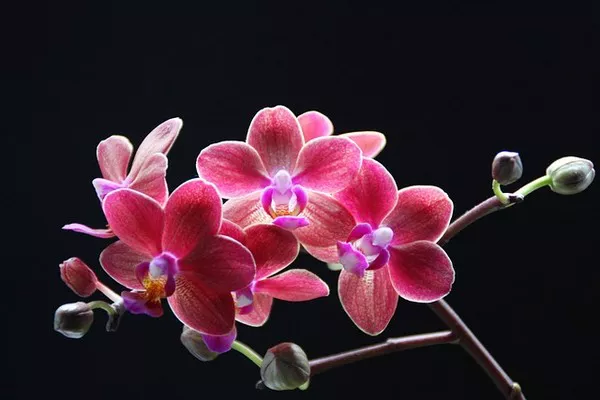Orchids, with their exquisite and alluring blossoms, have captivated humans for centuries. These vibrant flowers have found their way into various aspects of our lives, from ornamental decoration to perfumes and even therapeutic uses. Yet, for all their beauty and diversity, one question continues to intrigue many: Can you eat orchid flowers?
The idea of consuming flowers may seem unconventional to some, but it’s not as uncommon as you might think. Many cultures around the world incorporate edible flowers into their culinary traditions, using them to add color, flavor, and a touch of elegance to dishes. In this article, we delve into the intriguing world of orchid flowers, exploring their edibility, culinary uses, and potential health benefits.
Orchids: A World of Beauty and Diversity
Before we dive into the topic of consuming orchids, let’s take a moment to appreciate the astonishing variety of orchid species. Orchids belong to the family Orchidaceae, which is one of the largest and most diverse plant families on Earth, with over 25,000 documented species. These plants are renowned for their mesmerizing and often fragrant flowers, which come in an array of shapes, sizes, and colors.
From the elegant Phalaenopsis orchids, with their striking butterfly-like blooms, to the fragrant Vanilla orchids, the allure of orchids extends far beyond their aesthetic appeal. Many orchids are highly prized in horticulture and are cultivated by enthusiasts worldwide. Moreover, some orchids play a vital role in traditional medicine and perfumery.
The Culinary Appeal of Orchid Flowers
When it comes to culinary applications, not all orchids are created equal. Some orchid species produce flowers that are not only visually stunning but also edible, offering a delightful addition to various dishes. The practice of consuming orchid flowers is most prevalent in certain Asian cuisines, particularly Chinese and Thai.
Edible Orchid Varieties
Orchis mascula: Also known as the early purple orchid or simply “salop,” Orchis mascula is one of the few orchid species found in Europe that has edible tubers. These tubers, when properly prepared, are considered a delicacy in some regions.
Dendrobium: This is a vast and diverse genus of orchids, many of which produce edible flowers or stems. Dendrobium nobile, in particular, is widely cultivated for its edible qualities in Chinese cuisine.
Vanda: Another genus known for its edible orchids is Vanda. Vanda coerulea, native to Southeast Asia, is one of the species often used in salads, desserts, and garnishes.
Paphiopedilum: While many Paphiopedilum orchids are not consumed, Paphiopedilum delenatii, a species native to Vietnam, is sometimes used in salads in certain Southeast Asian countries.
Culinary Uses
In Chinese cuisine, particularly Cantonese and Hakka cuisines, edible orchids have a rich tradition. Dendrobium orchids, referred to as “shí hú” or “rock orchids,” are often used in soups, stews, and desserts. They are believed to have health benefits, including improving skin health and strengthening the immune system.
In Thai cuisine, orchid flowers are used as an attractive garnish for various dishes, from salads to desserts. In some cases, orchids are candied and used to add a sweet and floral touch to confections.
Health Benefits and Considerations
Consuming orchid flowers may offer more than just visual appeal; they may also provide certain health benefits, although these benefits vary depending on the species consumed. While the consumption of orchids is generally safe, there are a few considerations to keep in mind:
Potential Health Benefits
Nutrient Content: Orchid flowers are a source of vitamins, minerals, and antioxidants, which can contribute to overall health and well-being.
Traditional Medicine: In traditional Chinese medicine (TCM), certain orchid species, like Dendrobium, are believed to have medicinal properties. They are used to treat ailments such as fever, diabetes, and digestive issues.
Skin Health: Some orchid extracts are used in cosmetics and skincare products due to their hydrating and anti-aging properties.
Precautions
Allergies: As with any food, some individuals may be allergic to orchids. It’s essential to exercise caution and monitor for any adverse reactions when trying orchids for the first time.
Pesticides: If you plan to consume orchids from your garden or purchase them from a florist, ensure they have not been treated with pesticides or other chemicals that could be harmful if ingested.
Species Identification: If you are foraging for wild orchids, be certain of the species you are picking, as not all orchids are edible, and some may be endangered.
How to Safely Enjoy Orchid Flowers
If you are interested in incorporating orchid flowers into your culinary adventures, here are some steps to ensure that you do so safely:
Source: Obtain orchids from reputable sources, such as specialty food stores or online retailers, to ensure they are safe for consumption.
Cleanliness: Thoroughly wash orchid flowers under running water to remove any potential contaminants, such as dirt or residual pesticides.
Identification: Be certain about the species you are using, and avoid consuming wild orchids without proper knowledge and guidance.
Moderation: As with any new food, start with small quantities to gauge your tolerance and potential allergies.
Culinary Creativity: Experiment with orchids as garnishes, in salads, desserts, or even as an edible decoration for special occasions.
Conclusion: A Floral Feast for the Senses
In the culinary world, the notion of eating flowers may evoke curiosity and wonder. Orchid flowers, with their intricate beauty and potential health benefits, offer a unique opportunity to explore this intriguing aspect of gastronomy. While not all orchids are edible, the select species that are can elevate your dishes from ordinary to extraordinary, turning an everyday meal into a sensory delight. As with any culinary adventure, exercising caution, responsible sourcing, and a touch of creativity can open up a world of flavors and experiences, inviting you to savor the delicate delicacy of orchid flowers.


